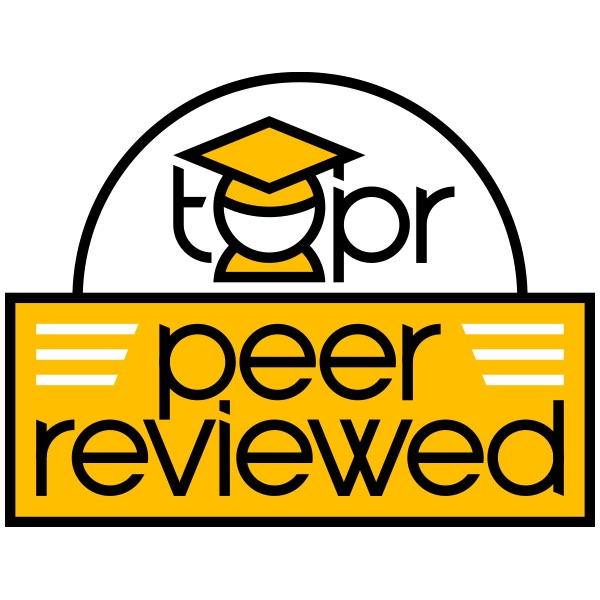
Introducing online students in a goal-setting icebreaker is a social and productive way to kick off a semester and has the opportunity for follow-ups to promote sincere goal planning and sustained peer interaction. This communal learning activity can add asynchronous personal connection that may feel lacking in an online course. It can also make student introductions more purposeful and relevant to their past, present, and future experiences with the course’s content and the field.
Icebreakers are effective methods of building community, as they lead to comfort, respect, rapport, and success in the classroom (Ynot Mepieza, 2023; Chlup & Collins, 2010). Research shows that the action of sharing goals with peers increases engagement and performance of weaker students (Curşeu et al., 2014), collaborative and active learning (Raluy & Mislang, 2022), understanding of peers (Hao et al., 2016), motivation (Hao et al., 2016; Raluy & Mislang, 2022), accountability/responsibility in the course (Raluy & Mislang, 2022), and the overall quality of goals (Hao et al., 2016).
Additionally, getting feedback on goal progress can be necessary for success, especially for those who have difficulty gauging their own performance (Locke & Latham, 2002). That feedback can come from diverse perspectives when students share goals in a class icebreaker and subsequent follow-ups.
Because setting educational goals before tasks can impact the task’s quality (Curşeu et al., 2014), setting goals should occur at the beginning of the semester, rather than the middle after poor planning may have already taken root.
Strategy Implementation
To design an asynchronous goal-setting icebreaker, first create brainstorming questions or prompts, shown in Artifact 1, to guide students toward specificity and thoughtful reflection. Prompts help students who may be unfamiliar with overtly setting, planning, and reflecting on goals. To stimulate deeper personal connection with course topics, include questions about their past experience with course topics, their current understanding of the course, their needs, their academic/career goals, and their future application of course concepts.
Instructors can choose to deliver this full list of questions to students and ask them to consider a handful that stand out to them. Instructors can also choose the handful of prompts themselves. Then students can creatively express their responses as brief text, images, or other media forms in a collaborative Digital Vision Board on a Padlet wall. The Digital Vision Board can be an ungraded activity taking place asynchronously over a defined timespan. Artifact 2 shows a Padlet wall that is designed to list several goal setting prompts and is embedded into a Canvas Discussion for easy interaction that also combines the media brainstorm with expanded discussion.
Students develop ideas in a written or spoken (audio or video) Canvas Discussion post by sharing their personal introductions with “about me” facts and elaborating on the Digital Vision Board media they posted that is most important to them. Students are encouraged to reply to peers’ posts to express commonalities, differences, and inspiring points.
Finally, offer goal progress follow-up submissions throughout the semester for students to stay on track, make any necessary adjustments, celebrate successes, and ask for guidance. Artifact 3 is a list of goal progress questions to address for check-ins throughout the semester and to encourage intentional and reflective goal planning.
Scholarly Reference(s)
Curşeu, P. L., Janssen, S. E., & Meeus, M. T. (2014). Shining lights and bad apples: The effect of goal-setting on group performance. Management Learning, 45(3), 332–348. https://doi.org/10.1177/1350507613483425
Hao, Q., Branch, R. M., & Jensen, L. (2016). The effect of precommitment on student achievement within a technology-rich project-based learning environment. TechTrends, 60(5), 442–448. https://doi.org/10.1007/s11528-016-0093-9
Locke, E. A., & Latham, G. P. (2002). Building a practically useful theory of goal setting and task motivation: A 35-year odyssey. The American Psychologist, 57(9), 705–717. https://doi.org/10.1037/0003-066X.57.9.705
Raluy, D., & Mislang, R. (2022). Developing learner autonomy and goal-setting through logbooks. Sisal Journal, 13(3), 347–366. https://doi.org/10.37237/130304
Ynot Mepieza, R. (2023). The power of ice breaker activity: Examining the impact of icebreakers on student participation and engagement in the classroom. European Journal of Learning on History and Social Sciences, 1(1), 22–36. https://doi.org/10.61796/ejlhss.v1i1.8
Citation
Franklin, E. (2024). Promote Social Goal Setting in an Asynchronous Icebreaker and Follow-up Activities. In deNoyelles, A., Bauer, S., & S. Wyatt (Eds.), Teaching Online Pedagogical Repository. Orlando, FL: University of Central Florida Center for Distributed Learning.